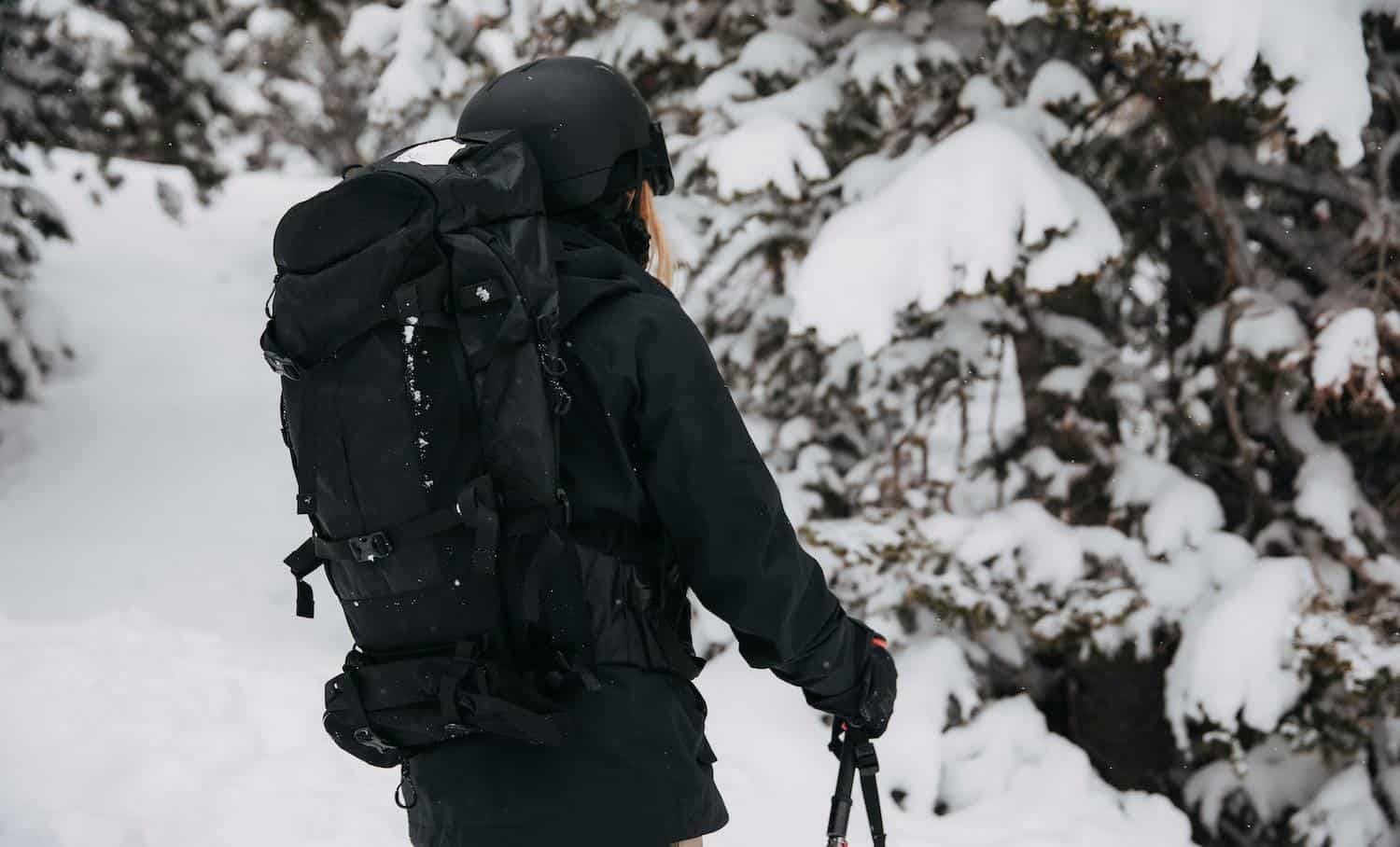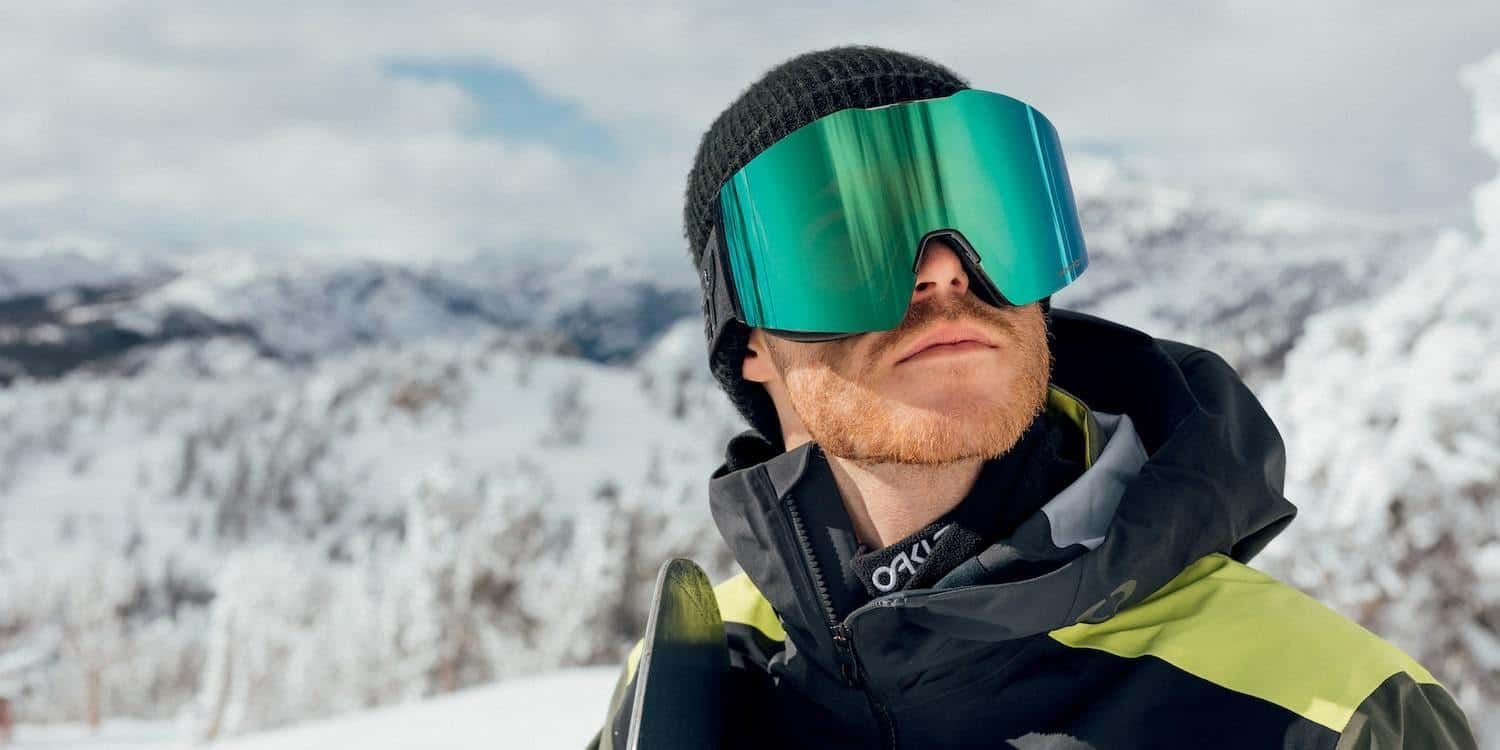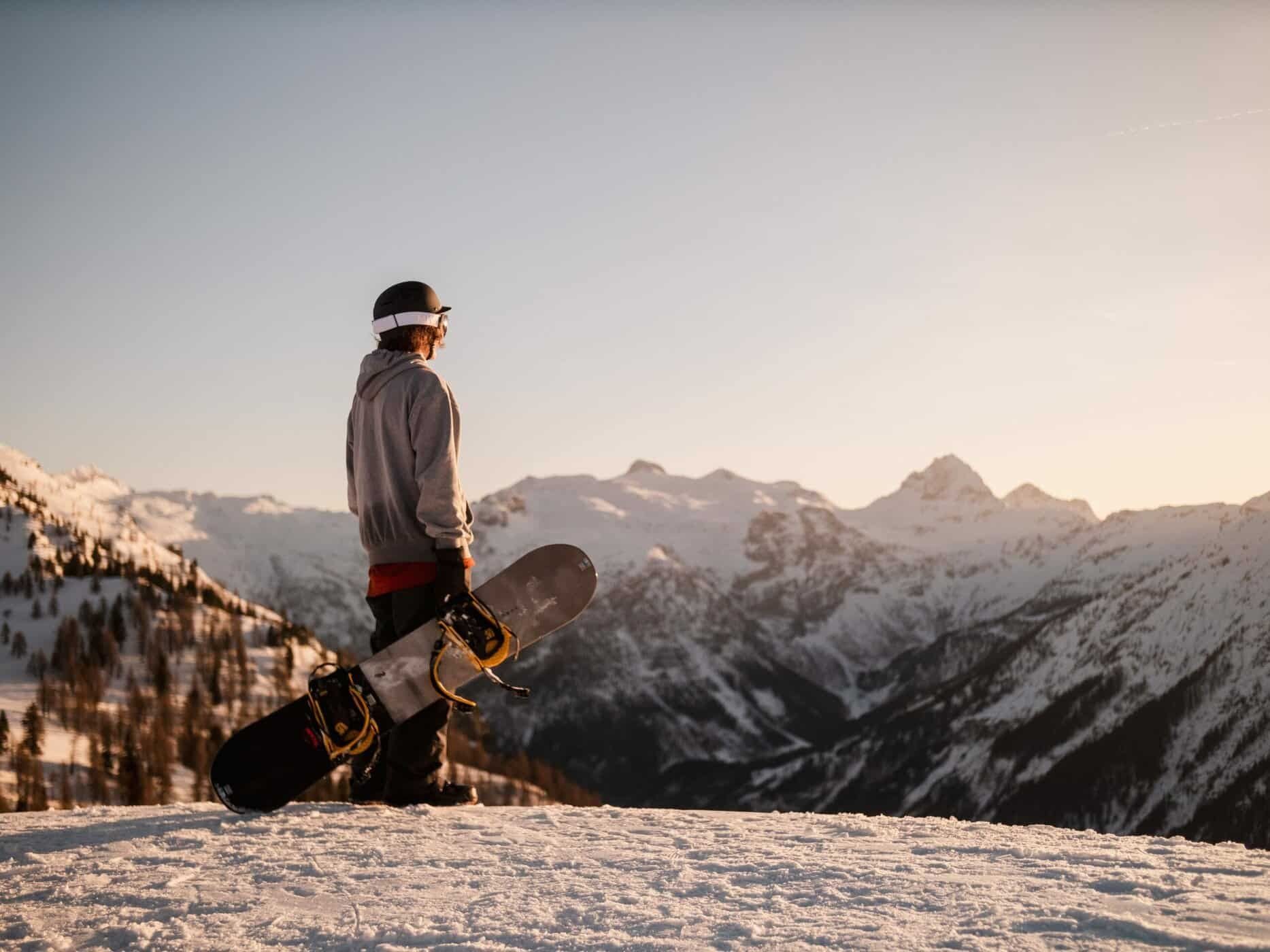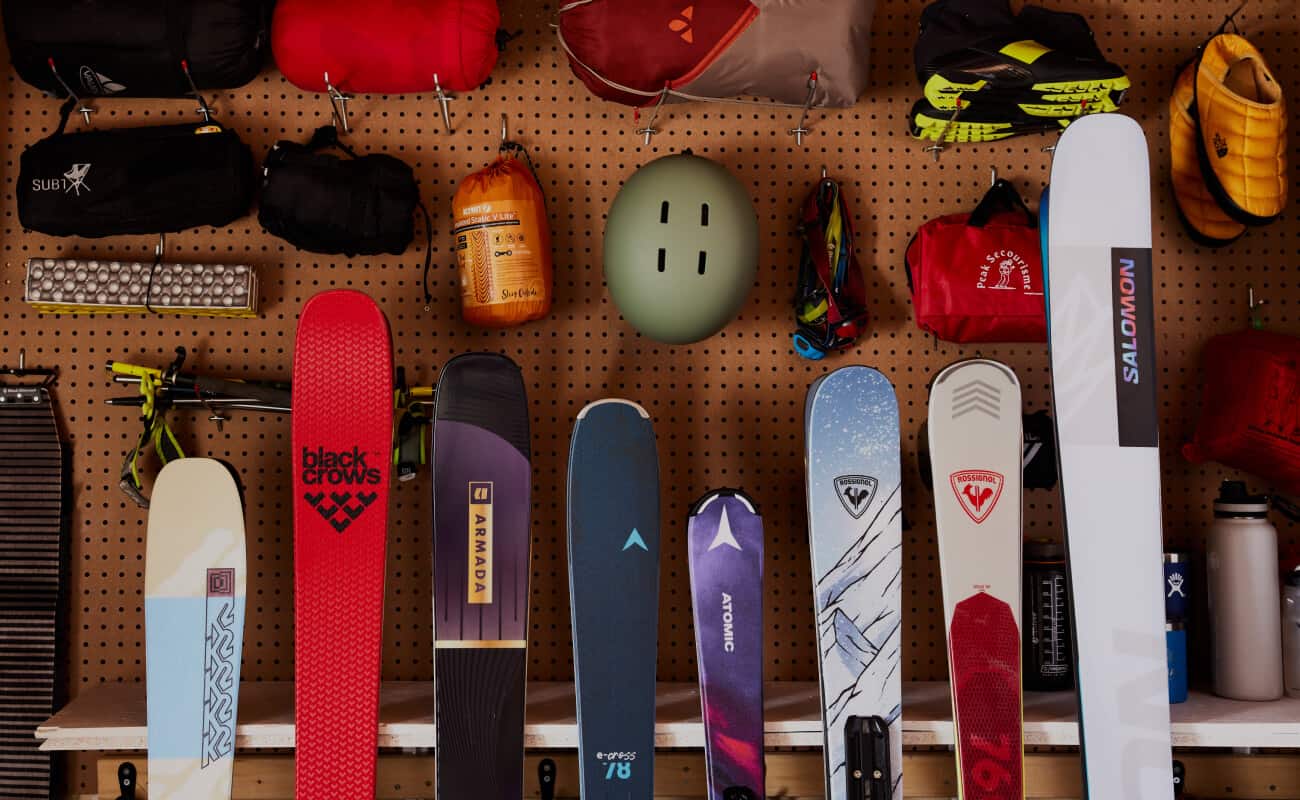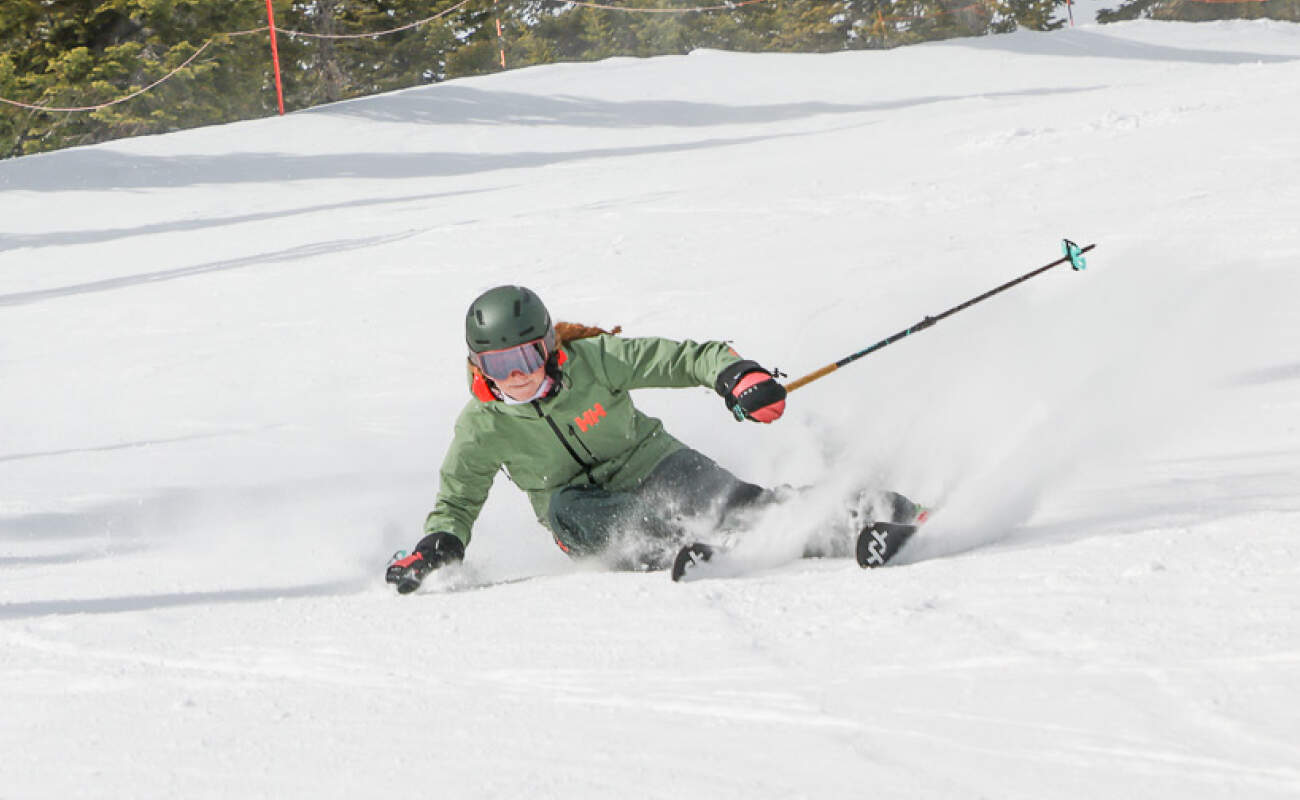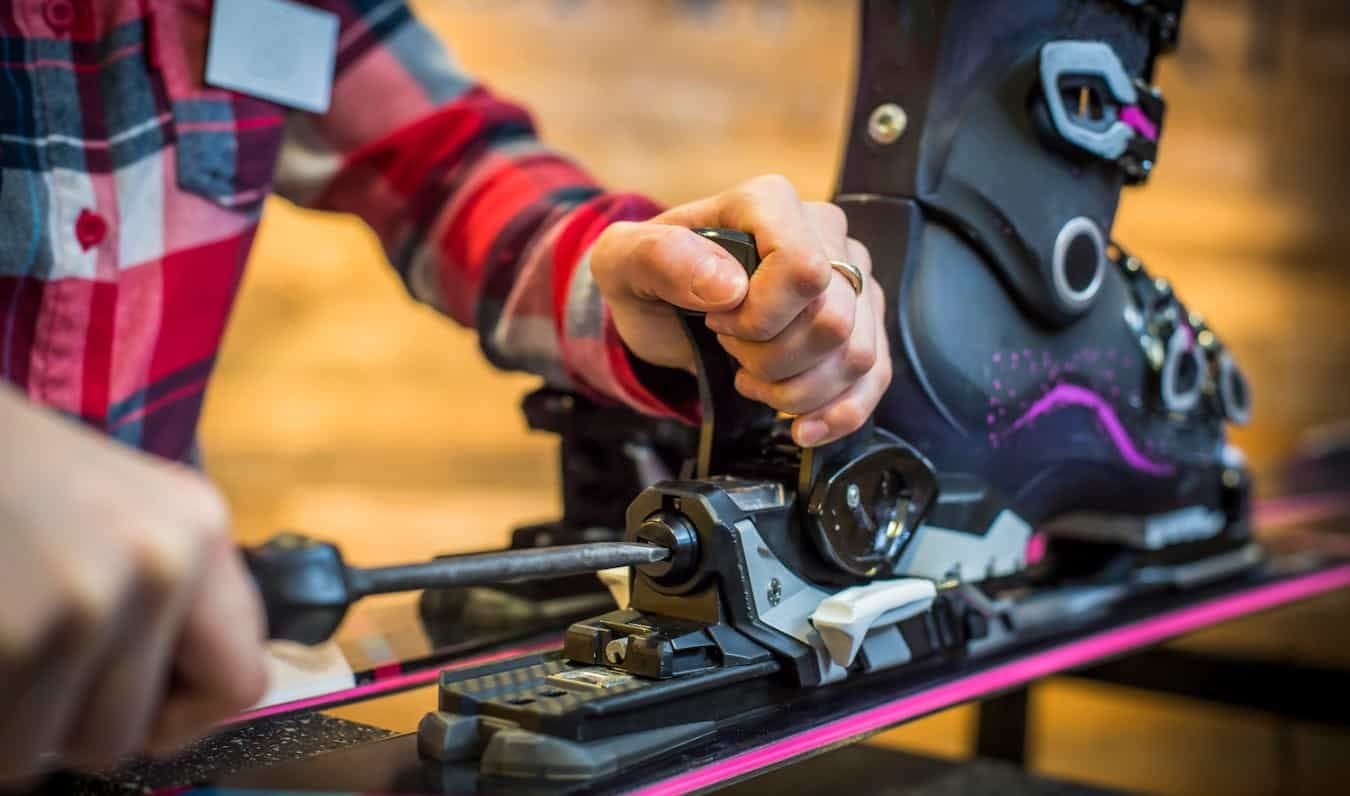I’ve been in the skiing game for a long time, and when I took a group of novice friends on a trip to the mountain, it gave me a whole new perspective on things. Most of my friends were equipped pretty basically—and in some cases, pretty poorly. Despite blue skies and fresh powder, equipment problems can cut short the fun on a perfect day out, and even drive people away from the sport altogether.
So, first things first: Without the best ski goggles, your time spent having fun will be pretty short-lived. That’s why we’ve put together a list for you about the best goggles. It’s the first step to enjoying skiing like you should—and maybe even the first step to your Olympic podium career (don’t forget to thank me in the interview).
The best ski goggles for you will depend on the conditions and visibility during the day. However it isn’t all up to changing weather—there are interchangeable lenses of all sorts for the best colour, flat light, and more.
- Best overall goggles: Anon M4 Cylindrical
- Best for under $100: Oakley Target Line L
- Best for cloudy days: Oakley Line Miner L
- Best for wearing over regular glasses (OTG): Anon M2
- Best photochromic lens goggles: Salomon Radium Prime Sigma Photochromic Goggles
- Best for night skiing: Oakley Flight Tracker L
- Best anti-fog goggles: Julbo Airflux XL
- Best for kids: Scott Junior Witty
1. best overall goggles
As Anon's signature product, the M4 Cylindrical Goggles provide the hottest look and the most essential ski goggles traits. They’re compatible with prescription glasses (OTG), have a wide field of view, total UV protection, and come with a spare lens. Full venting, quick change lenses, triple foam padding… we could easily go on. But at this price, and with these features, the M4 Cylindrical Goggles are unbeatable.
Price: 0.00$
Brand Name | Product Type
- Lorem ipsum dolor<\/li>
- Lorem ipsum dolor<\/li>
- Lorem ipsum dolor<\/li><\/ul>","_id":"8a82956"},{"feature":"
- Lorem ipsum dolor<\/li>
- Lorem ipsum dolor<\/li>
- Lorem ipsum dolor<\/li><\/ul>","_id":"b7c8538"}],"single_product_id":"","cta_1_url":{"url":"https:\/\/www.altitude-sports.com\/products\/anon-mens-m4-cylindrical-goggle-sonar-blue-spare-lens-llll-ann-203541","is_external":"on","nofollow":"","custom_attributes":""},"cta_2_url":{"url":"https:\/\/www.altitude-sports.com\/collections\/anon","is_external":"on","nofollow":"","custom_attributes":""},"credit":null,"limit":null,"collection_link":null}
2. best goggles under $100
Simple is best as they say, and Oakley is one of the best around—if not the best. Their Target Line L Goggles max your peripheral vision and integrate seamlessly with most helmets. Streamlined to fit comfortably on your face and over your glasses, with anti-fog properties, these may very well be the perfect entry-level goggles.
Price: 0.00$
Brand Name | Product Type
- Lorem ipsum dolor<\/li>
- Lorem ipsum dolor<\/li>
- Lorem ipsum dolor<\/li><\/ul>","_id":"b3e2b01"},{"feature":"
- Lorem ipsum dolor<\/li>
- Lorem ipsum dolor<\/li>
- Lorem ipsum dolor<\/li><\/ul>","_id":"beff2b3"}],"single_product_id":"","cta_1_url":{"url":"https:\/\/www.altitude-sports.com\/products\/anon-helix-2-0-non-mirror-goggle-mens-llll-ann-185291","is_external":"on","nofollow":"","custom_attributes":""},"cta_2_url":{"url":"https:\/\/www.altitude-sports.com\/collections\/oakley","is_external":"on","nofollow":"","custom_attributes":""},"credit":null,"limit":null,"collection_link":null}
3. best cloudy day goggles
In flat light—when the cloud cover flattens everything in front of you—nothing pops shapes like rose gold lenses. Oakley's Prizm lenses are industry leaders, and the Prizm Rose Gold lenses on the Line Miner L Goggles are no different. They effortlessly accent colours and bring out contrasts. Plus these bad boys are interchangeable. Goodbye flat light!
Price: 0.00$
Brand Name | Product Type
- Lorem ipsum dolor<\/li>
- Lorem ipsum dolor<\/li>
- Lorem ipsum dolor<\/li><\/ul>","_id":"3307177"},{"feature":"
- Lorem ipsum dolor<\/li>
- Lorem ipsum dolor<\/li>
- Lorem ipsum dolor<\/li><\/ul>","_id":"95d386b"}],"single_product_id":"","cta_1_url":{"url":"https:\/\/www.altitude-sports.com\/products\/oakley-line-miner-l-goggles-matte-white-prizm-rose-gold-lens-llll-oak-oo7070-c5","is_external":"on","nofollow":"","custom_attributes":""},"cta_2_url":{"url":"https:\/\/www.altitude-sports.com\/collections\/oakley","is_external":"on","nofollow":"","custom_attributes":""},"credit":null,"limit":null,"collection_link":null}
4. best over-the-glasses (otg) goggles
If you wear glasses, you probably know that finding a compatible ski goggle model isn't always easy. With the Anon M2 Goggles, your days of dealing with irritating contact lenses or expensive prescription lenses are officially over. This spherical model is specially designed to be worn with glasses underneath, while providing you with an exceptional field of vision. Major win-win.
Price: 0.00$
Brand Name | Product Type
- Lorem ipsum dolor<\/li>
- Lorem ipsum dolor<\/li>
- Lorem ipsum dolor<\/li><\/ul>","_id":"5a04726"},{"feature":"
- Lorem ipsum dolor<\/li>
- Lorem ipsum dolor<\/li>
- Lorem ipsum dolor<\/li><\/ul>","_id":"69dd9ee"}],"single_product_id":"","cta_1_url":{"url":"https:\/\/www.altitude-sports.com\/products\/anon-mens-m4-toric-goggle-sonar-infrared-spare-lens-llll-ann-203551","is_external":"on","nofollow":"","custom_attributes":""},"cta_2_url":{"url":"https:\/\/www.altitude-sports.com\/collections\/anon","is_external":"","nofollow":"","custom_attributes":""},"credit":null,"limit":null,"collection_link":null}
5. Best Photochromic Lens Goggles
Photochromic lenses change tints in stronger light, allowing better vision in variable conditions. The Salomon Radium Prime Sigma Photochromic Goggles allow smooth transition and better perception in different light by amplifying colour contrasts. They’re lightweight, comfy, and breathable, plus the lens is treated for fog. Peak tech, 100% UV protection, and quick-’n-easy lens changes… perfect for high-altitude skiing.
Price: 0.00$
Brand Name | Product Type
- Lorem ipsum dolor<\/li>
- Lorem ipsum dolor<\/li>
- Lorem ipsum dolor<\/li><\/ul>","_id":"35e4c47"},{"feature":"
- Lorem ipsum dolor<\/li>
- Lorem ipsum dolor<\/li>
- Lorem ipsum dolor<\/li><\/ul>","_id":"9165919"}],"single_product_id":"","cta_1_url":{"url":"https:\/\/www.altitude-sports.com\/products\/salomon-radium-prime-sigma-photochromic-goggles-unisex-llll-sal-l47246600","is_external":"on","nofollow":"","custom_attributes":""},"cta_2_url":{"url":"https:\/\/www.altitude-sports.com\/collections\/scott","is_external":"on","nofollow":"","custom_attributes":""},"credit":null,"limit":null,"collection_link":null}
6. Best Night Skiing Goggles
Night skiing enthusiasts only need to remember this—yellow (or in this case, bronze)! Like pink in the day, yellow-tinted lenses bring out contrasts at night. The Flight Tracker L Goggles with a Torch Iridium Lens by Oakley are our favourites for night skiing. A yellow Prizm Snow lens is especially effective when the sun goes down.
Price: 0.00$
Brand Name | Product Type
- Lorem ipsum dolor<\/li>
- Lorem ipsum dolor<\/li>
- Lorem ipsum dolor<\/li><\/ul>","_id":"4cf283d"},{"feature":"
- Lorem ipsum dolor<\/li>
- Lorem ipsum dolor<\/li>
- Lorem ipsum dolor<\/li><\/ul>","_id":"20bd29e"}],"single_product_id":"","cta_1_url":{"url":"https:\/\/www.altitude-sports.com\/products\/oakley-flight-tracker-xl-goggle-matte-black-prizm-snow-torch-iridium-lens-llll-oak-oo7104-07","is_external":"on","nofollow":"","custom_attributes":""},"cta_2_url":{"url":"https:\/\/www.altitude-sports.com\/collections\/oakley","is_external":"on","nofollow":"","custom_attributes":""},"credit":null,"limit":null,"collection_link":null}
7. Best Anti-fog Goggles
Every good pair of goggles comes with venting and anti-fog treatment. The Julbo Airflux XL Ski Goggles were designed to dump excess body heat when skinning on ski touring adventures. Their SuperFlow ventilation tech might just be the best ever made. Plus, you get a great lateral and vertical field of vision and an anatomic frame.
If you want more tips on how to de-fog your goggles, check out our blog here.
Price: 0.00$
Brand Name | Product Type
- Lorem ipsum dolor<\/li>
- Lorem ipsum dolor<\/li>
- Lorem ipsum dolor<\/li><\/ul>","_id":"534c048"},{"feature":"
- Lorem ipsum dolor<\/li>
- Lorem ipsum dolor<\/li>
- Lorem ipsum dolor<\/li><\/ul>","_id":"8f27e76"}],"single_product_id":"","cta_1_url":{"url":"https:\/\/www.altitude-sports.com\/products\/julbo-airflux-cat-0-ski-goggle-llll-jul-jg748-00","is_external":"on","nofollow":"","custom_attributes":""},"cta_2_url":{"url":"https:\/\/www.altitude-sports.com\/collections\/julbo","is_external":"on","nofollow":"","custom_attributes":""},"credit":null,"limit":null,"collection_link":null}
8. best kid's goggles
Kids need performance too—maybe more so, once they catch the skiing bug and you practically have to drag them off the slopes. Tailored for kids but with big-boy tech, the Scott Junior Witty Goggles are anti-fog, flexible, and come with plenty of face foam for fine fitting. They make your kid stand out, so it's easy to find them when it's time to head back inside… for a slice of pizza and a side of fries, of course.
Price: 0.00$
Brand Name | Product Type
- Lorem ipsum dolor<\/li>
- Lorem ipsum dolor<\/li>
- Lorem ipsum dolor<\/li><\/ul>","_id":"016c340"},{"feature":"
- Lorem ipsum dolor<\/li>
- Lorem ipsum dolor<\/li>
- Lorem ipsum dolor<\/li><\/ul>","_id":"1606136"}],"single_product_id":"","cta_1_url":{"url":"https:\/\/www.altitude-sports.com\/products\/scott-junior-witty-goggle-kids-llll-sct-271827","is_external":"on","nofollow":"","custom_attributes":""},"cta_2_url":{"url":"https:\/\/www.altitude-sports.com\/collections\/scott","is_external":"on","nofollow":"","custom_attributes":""},"credit":null,"limit":null,"collection_link":null}
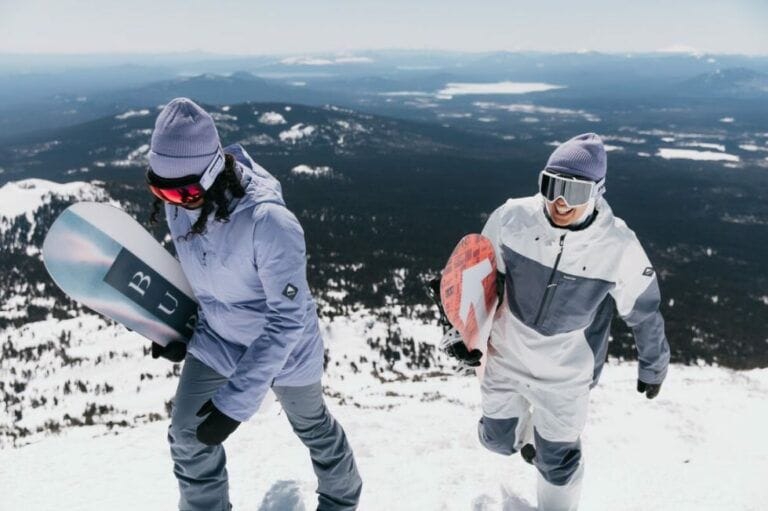
Buying Guide:
HOW TO CHOOSE THE BEST SKI GOGGLES
Still looking for the best all-condition ski goggles? Choose a pair that comes with two lenses, one for sunnier days and one cloudy. Look at the interchangeable lens systems closely—brands like Oakley, Electric and Smith Optics let you change quickly.
If you go for a high-end, single-lens pair, make sure they are removable and invest in different tinted lenses.
1. What colour of lens should you choose?
Sunny days
Darker tints like bronze, grey and purple are all earmarked for sunny days. These lenses will filter light and offer a comfortable, clear vision.
Cloudy days
Blue and orange lenses will do the trick., a compromise between bronze for days and yellows at night. They brighten things up and don’t over-contrast obstacles and shadows.
Snowfall or night
Lenses with yellows and pinks are your best friends here. Contrast and brightness pop with these on. A totally clear lens is sometimes enough at night.
2. Lens Shapes
Spherical lenses
These lenses expand your field of vision and reduce image distortion, as well as soften the glare of sun on snow. These will usually run you a little more but are without question the best on the market.
Cylindrical lenses
These lenses are curved horizontally from right to left, but vertically are flat. These are great for more casual or entry-level ski goggles. They don’t deflect as much sunlight shining off the snow and don’t have quite the same visual field as spherical lenses, but are great starters.
3. Helmet compatibility
Most goggle brands also make helmets., making it simple to find perfectly compatible pairings. Always try new goggles with your helmet on. There shouldn’t be a space between the top of the goggle frame and the bottom of the helmet’s front lip. The helmet should rest lightly on the top of the frame, but if it is heavy against the goggles, it might cause the goggles to slide down.
If there is a fit issue, Altitude Sports’ excellent return policy makes it simple to exchange or return the wrong fit.
4. Ski Goggle Size
If the goggles only reach the corner of your eye, they’re too small and will cut your vision. Ideally, there will be a finger’s width between the corner of your eye and the edge of the goggles. That said, everyone’s face shape is slightly different, and one pair might not shape to another’s contours. Generally, if your helmet is smaller, your goggles should be too. Oversized goggles will slide down your face.
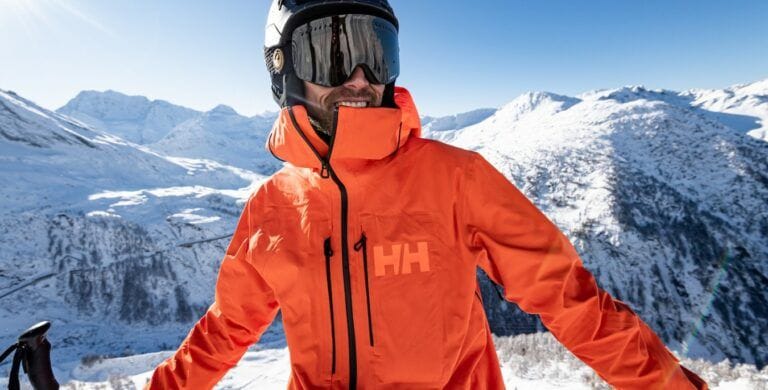
ski goggles faq
Q: Are polarized lenses worth it?
A: Better clarity of vision; more intense contrasts; reduced glare—in a word, yes! Go polarized if hesitating to choose between lenses. Your eyes tire less and you stay out longer on the runs.
Q: What are photochomic lens?
A: These lenses are increasingly popular, adapting to light conditions outside by changing the tint accordingly. Brighter light and they darken to offer glare protection. In lower light, they clear up. They adjust automatically but can take a few minutes before finalizing adjustments to different light.
Q: How do I avoid foggy goggles?
A: Most lenses today are anti-fog treated, but proper care for your goggles will determine the effectiveness of the treatment. Don't block airflow with your tuque or helmet, and don't wipe the inside of your goggles. But for more details, read all about it here.
Q: Can I wear prescription glasses under ski goggles?
A: OTG (Over The Glasses) is your key! Find one of these pairs of goggles, built to slide comfortably over your prescription glasses. Contacts are tough for long days out on the mountain as they can get dry. Go with OTGs for more fun outdoors.
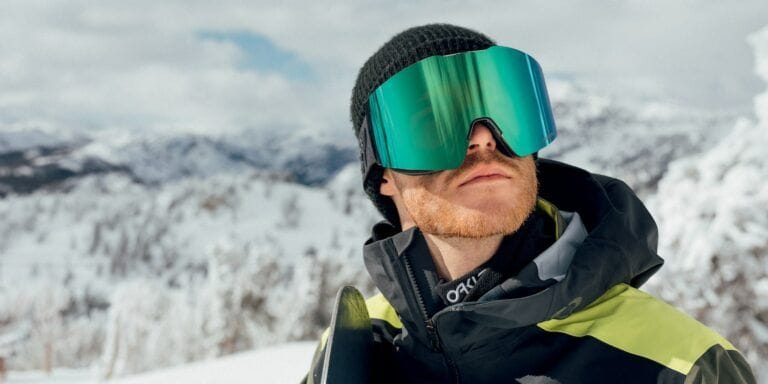
Nowadays, most ski goggle models have anti-fog treatments, anti-scratch protection, venting capabilities, silicone supports and foam padding for comfort. Most brands develop their own proprietary technologies as well. Choose a pair of goggles that answers your needs. Think of the shape of your face and helmet compatibility. With all the choices out there, you should find your best ski goggles soon enough.
Happy skiing!


